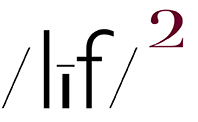1 ~ all photos - pinhole lens / (embiggenable)
2
3
4
5
OK, TRUTH BE TOLD, I HAVE A COUPLE ENTRIES ON deck ready for posting but, for one reason and some others, I have been reluctant to actually post. That written, with intention of avoiding any deep-dive self-analytical malarkey, I awoke this AM with a resolve to get off the schneid, posting wise.
FYI, that resolve was partially instigated by an entry on T.O.P., re: high mp / resolution picture making devices (in the form of FF digital cameras); a subject which has been known to tip me over the edge, re: resolution / sharpness as a component to making one’s pictures “better”. The topic always instigates flood of comments similar to those found on the T.O.P. entry:
“I believe resolution makes a huge difference in the quality of a photo …..” or, “I have no interest in ~24 MP sensors as they don't match my need for resolution …..”
So, rather than writing a 10K word scree on the subject, I thought that the best course of action for me would be to grab one of my µ4/3 cameras, slap on the pinhole “lens”, and make a bunch of res?what res? pictures (#2-4 above, #1 made earlier). Taking my own advice, I have, over the past few days, been making such pictures. And, FYI, it did, in fact, calm me down.
However, in closing (cuz I gotta get in some kind shot across the bow of that ship), let me write that, iMo, in all but a few examples, re: really good photographs, state-of-the-art sharpness / resolution has little or nothing to do with it. In fact, iMo, current state-of-the-art sharpness / resolution, in the trade aka: “perfection”, makes it nearly impossible–to my eye and sensibilities–to even look at, much less appreciate, such a photograph cuz I simply do not give a crap about technique. Pictures with visually obvious technical / technique “perfection” are an absolute non-starter to my eye and sensibilities.
